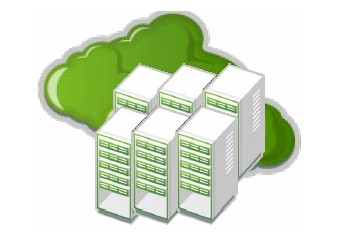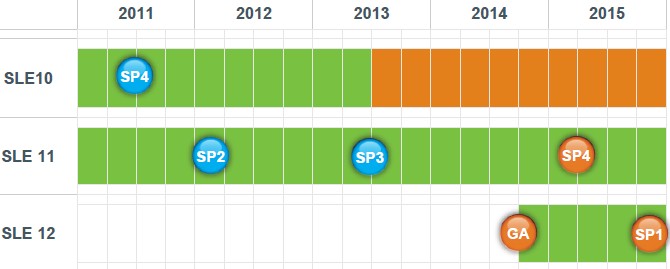Long-Awaited SUSE Linux 12 Enters Beta

SUSE Linux has opened up the beta testing of its next-generation Enterprise Server 12 operating, the first major update of its Linux platform since early 2009.
The pace of change for the server operating systems has slowed down considerably in recent years, but there is still plenty of work to be done to keep the software current. More importantly, each major release gives the operating system maker a chance to retool the software in a more substantial way to better reflect what is going on with systems, networks, and storage now and into the near-term, something that is not possible with a simple service pack update of an existing code base.
SUSE Linux is a division of Attachmate, a privately software conglomerate that bought Novell, the former owner of the commercial Linux distributor, a few years back. After the acquisition, the launch cadence for new software has not changed all that much. Generally, speaking, SUSE Linux does a major release every four to five years and tries to get a service pack update out the door once every year or so. The service packs allow for the kernel to be updated to support new processors, storage, and networking hardware while not breaking compatibility with the Linux kernel and therefore not requiring for software to be recertified to run on it. This certification process is an expensive and time-consuming undertaking, and something that enterprises only want to do rarely.
SUSE Linux Enterprise won't just come in a server edition, but also in a version with high availability extensions and another version aimed at desktops. It is not clear if SUSE Linux will do a real-time variant of the kernel, as it did with SLES 11.
Among the features coming in SLES 12 is a new way to do full system snapshots and rollback to reduce planned downtime during upgrades. The operating system will also have features that can migrate running processes on the system from one chunk of processors or memory that might be failing to another chunk. The system installer is also going to be improved to only require one reboot instead of several, and will also not only have automated installation using AutoYast, but will allow companies to write their own customized installation scripts using Ruby if they want to do something non-standard. SLES 12 will come with a new network management tool, called Wicked, that will be able to deal with more complex network setups automatically.
On the virtualization front, the KVM hypervisor embedded inside of SLES 12 will be able to run Windows operating systems, and will include I/O improvements and storage and network device hotplugging. The Xen hypervisor will get improved scalability and lower latency tweaks, and the Open vSwitch virtual switch, a popular component for software-defined networks employing OpenFlow controllers, will be embedded with SLES 12 as well. SLES 12 will also sport the Samba 4.1 update to the clone of the Windows file system, and will important support the SMB 3.0 protocol embedded in Windows Server 2012.
Based on the release roadmap below, it looks like we should expect SLES 12 sometime around August or September of this year. More details will emerge as we get closer to launch date.
Like its Linux peers, SUSE Linux offers a very long-term support cycle for its code, so customers are not required to move to the latest version with anything resembling haste. The current SLES 11 and future SLES 12 will have ten years of general support plus an additional three years of long term support. You have to move up through the service packs to get that general support for a decade, but you can buy a special Long Term Service Pack Support contract for a supplemental fee if you want SUSE Linux to support a service pack for a long time. Plenty of mainframe and high-end server shops opt for this, and it stands to reason that many customers deploying SAP HANA as the in-memory database for both analytics and transaction processing will want to not change their systems once they are up, running, and tuned.
SUSE Linux is the preferred Linux on IBM mainframes, with more than 80 percent of the virtual machines running on System z iron having the green chameleon on them. (Red Hat Enterprise Linux is also supported on IBM mainframes, but as yet Canonical's Ubuntu Server is not yet available.) As for SAP, over 70 percent of the installations of SAP's various ERP suites that are deployed on Linux are deployed on top of SUSE Linux, and the SAP HANA in-memory database is only available on Xeon E7-based servers running SUSE Linux. About half of the largest supercomputer clusters in the world use a variant of SUSE Linux (Cray and SGI both sell an adapted version of SLES on their high-end machines), and all told, SUSE Linux has more than 15,000 customers worldwide and is certified on more than 13,500 different pieces of hardware and with more than 9,000 different applications. In an interesting tidbit, of the commercial-grade Linuxes on the market, SLES is more popular than RHEL. (That is just for the licenses that people pay support contracts for; it is not the Linux installed base in China.)
SUSE Linux may not have built as large of a business as Red Hat has, but it is certainly doing better than any of the incumbent Unixes – Solaris, AIX, or HP-UX – are doing in the market by many measures. As far as EnterpriseTech knows, the upcoming SLES 12 will support the Itanium processor from Intel as well as X86 chips from Intel and AMD and Power and System z processors from IBM. (Red Hat dropped support for Itanium with RHEL 6 in November 2010, although you can still run RHEL 5 on Itanium.)
SUSE Linux is being somewhat tight-lipped about what it plans to do with SLES 12, but some details have emerged.
The SP3 update to SLES 11 last fall included updates for Intel's future "Haswell" Xeon server chips as well as the "Centerton" Atom S1260 and the "Ivy Bridge" Xeon E5 chips aimed at two-socket and four-socket systems. The Ivy Bridge Xeon E5-2600 v2 chips came out last fall, while the Xeon E5-4600 v2 processors were quietly launched this week. SLES 11 SP3 also had updates for impending AMD Opteron 4000 and 6000 processors, which were launched earlier this year. The kernel supports up to 4,096 logical processors for Itanium and X86 processors and up to 1,024 for Power-based systems and up to 64 for System z machines. The Power and Itanium processors were enabled to support 1 PB of main memory, but in practice, the operating system is limited to 8 TB on Itanium servers and 512 GB on Power machines. X86 machine can address up to 64 TB (the only machine that does so is SGI's "UltraViolet" UV 2000 system) and SUSE says it tops out at 16 TB practically speaking.
Our point in bringing this up is that SUSE Linux has plenty of scalability already. So don't expect a lot of change here except what comes by virtue of the Linux 3.12 kernel that SLES 12 will be based on.











